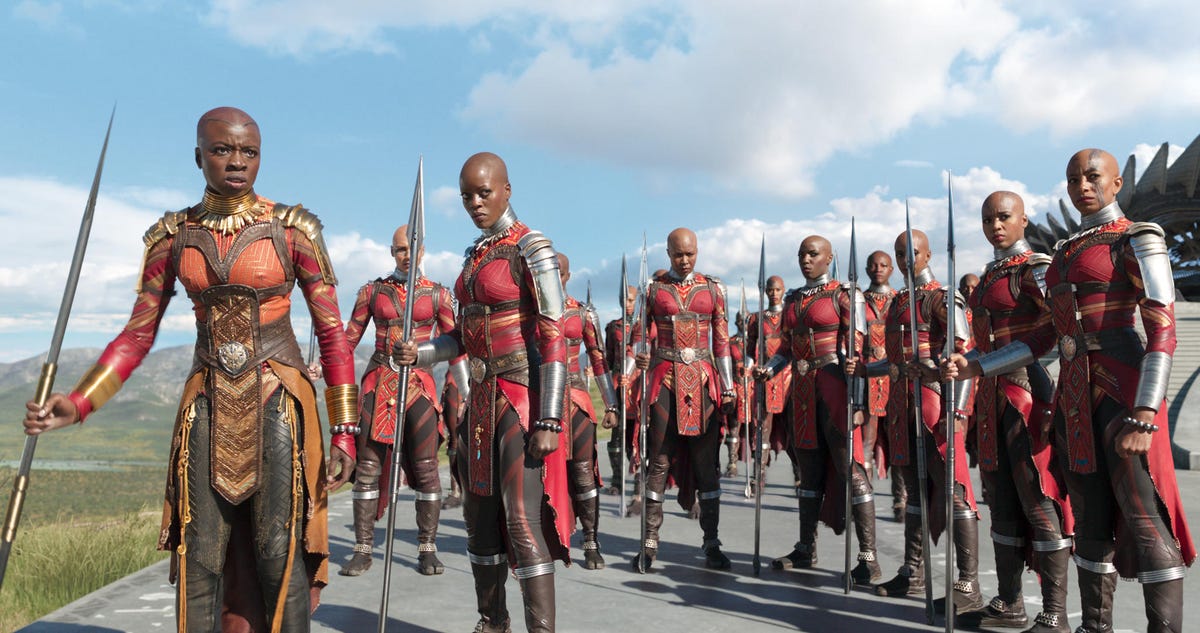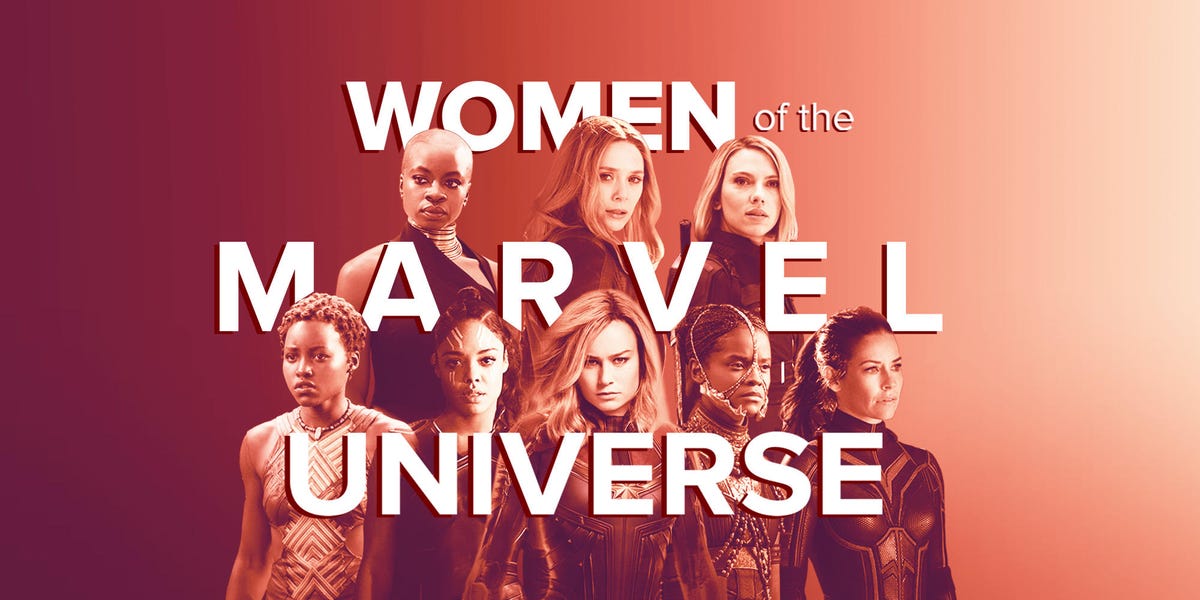
Meet the Oscar winner for costumes who made Black Panther look fierce
Superhero blockbuster Black Panther has a lot to brag about. It's delighted critics and fans, crossed the $1 billion mark at the box office and become the first movie based on a comic book to net an Oscar nod for best picture.
At Sunday's Academy Awards, Black Panther led to two historic firsts for African-American women: Ruth E. Carter won an Oscar for best costume design, and Hannah Beachler won an Oscar for best production design. (Black Panther itself became the first Marvel movie to win an Oscar for costume design -- and also picked up a third Oscar for best original score.)
Costume designer Ruth E. Carter at the premiere of Black Panther last year.
Alberto E. Rodriguez/Getty Images for DisneyThose who've seen the movie and its Afrofuturistic-infused getups probably won't be surprised by the costume win. The Dora Milaje special forces stomp around in warrior boots and intricately detailed red and gold leather tunics with matching gauntlets. Killmonger looks intimidating (and so buff) in camo pants topped by a fitted blue shirt and fierce armor. And T'Challa's vast array of suits and dress shirts may all be black, but each has wonderfully distinct flourishes.
You can thank Carter for making Lupita Nyong'o, Chadwick Boseman and Danai Gurira look even sexier than usual by dressing them in sleek formal wear for a night out at a Busan casino. Carter's been nominated for Oscars twice before, for her work in Spike Lee's Malcolm X (1992) and Steven Spielberg's Amistad (1997).
Before heading to Wakanda, Carter consulted with frequent Marvel collaborator Judianna Makovsky and other designers who'd worked with the studio.
"They all said to me, 'This is a little bit different than your normal superhero film,'" Carter says over the phone from New York. "Actually, I'm really glad I didn't really know the language of the other superhero films when I worked on Black Panther, so that I could approach it from my own point of view and not be influenced by what I thought it should look like."

Angela Bassett's Queen Ramonda, and her Zulu-inspired Black Panther headdress.
Marvel Studios/Composite by Chelsea Shi/CNETBlack Panther may have given us Angela Bassett's Queen Ramonda rocking a Zulu-inspired headdress as only she could do or a shirtless Michael B. Jordan's Killmonger in a long black hooded cardigan. But period pieces are the films that typically rule costume design at the Oscars, followed by fantasy movies and adaptations of children's books. You have to go all the way back to 1990 (Dick Tracy) to find a nominated title based on a comic book.
"The ones that get the awards are usually the ones [where] you're creating everything, that the designer is really designing," three-time Academy Award nominee and costume designer Makovsky says by telephone from LA. "Superhero films have not gotten a lot of attention or love in that respect. And I think it's ridiculous because it's where costume design is going. It's technical. It's craftsmanship. It takes a lot of artisans to make these, and I think [that's] misunderstood."

Costume Designer Judianna Makovsky on the set of Guardians of the Galaxy Vol. 2.
Chuck ZlotnickMakovsky knows her superhero films. She's worked closely with Marvel as costume designer on Captain America: The Winter Soldier, Captain America: Civil War, Guardians of the Galaxy Vol. 2, Avengers: Infinity War and the upcoming Avengers: Endgame.
When she started working at Marvel, Scarlett Johansson's character Natasha Romanoff, aka Black Widow, was wearing high heels. "By the time I finished, [female characters] are in combat boots," she says. Before making sure the Avengers' footwear was appropriate for saving the world, she designed garb for The Hunger Games and Harry Potter and the Sorcerer's Stone, which earned her an Oscar nomination.
Carter shiny statue further celebrates Lupita Nyong'o's Nakia attired in different shades of green throughout the movie or Laetitia Wright's Shuri and her approach to a chic-yet-comfortable princess-scientist style. And the designer was honored on Feb. 19 with a Career Achievement Award from her peers at the Costume Designers Guild. The award recognizes leaders who've made a lasting impact on the field of costume design.
But it hasn't been an easy journey.

"I was very fortunate to come into this industry with Spike Lee and Keenen Ivory Wayans and Robert Townsend during the time when black cinema was emerging again," Carter says. "Not everybody has that kind of opportunity, because you do have to fight to be seen and to be heard as a designer if you're African-American, if you're Asian-American, if you're Indian-American. You're not celebrated immediately, and sometimes ever. I'm 30 years in, and I'm being celebrated today. But I have 40 films behind me."
The numbers tend to be dire when it comes to female representation behind the scenes in Hollywood. According to a study by the USC Annenberg School for Communication and Journalism, from 2007 to 2018 only 4 percent of the directors of the 1,200 top-grossing films released domestically were female. The same research shows that when it comes to the 265 top movies from 2016 to 2018, women accounted for only 15.5 percent of the editors, 3 percent of the directors of photography and 2.3 percent of the composers.
But chances are that the costume designer for your favorite 2016-2018 movies was a woman. Females led 84.4 percent of the costume design departments. The Costume Designers Guild has 1,050 members, about 80 percent of whom are female.

Click for more on the women who make Marvel run.
To illustrate what they'd like to see going forward, both Makovsky and Carter point to a definition of inclusivity that extends beyond gender.
"Who knows what the possibilities are when inclusion creates another aspect of the art?" Carter asks. "So the Indian-American, the Asian-American, [the African-American] become the celebrated costume designer, and they bring their makeup to the canvas. We are going to start seeing something fresh and new, and that's what it should be about."
Demystifying the Hollywood lifestyle
And though it might seem like a life of pure glamour to be heaped with accolades, walk the Oscars red carpet, work with the hottest celebrities and get recognized by your peers, Carter and Makovsky are both quick to share just how brutal Hollywood can be.
"We work 16-hour days, seven days a week. Preproduction can be fairly civilized, but once you're shooting, you have no life," Makovsky says with a laugh. Granted, you do it for a certain amount of time, and you can have time off. But still, people need to work and get their health insurance and make money."
Carter is even more candid when reflecting on the trade-offs she made for her passion. A widow, she more than once considered having children but never did.
"We don't have a normal life," she says. "We give this life to the storytelling medium of filmmaking. We love it so much that we are willing to sacrifice."
Source
Tags:
- Costume Design Oscar Nominations
- Oscar For Best Costume Design
- Oscar For Costume Design
- Costume Design Oscar Nominations
- And The Winner Is Oscar
- Winners Of The Oscar
- Meet The Carmichaels
- Meet The Cardinal s
- Meet The Millers
- Meet The Fockers Cast
